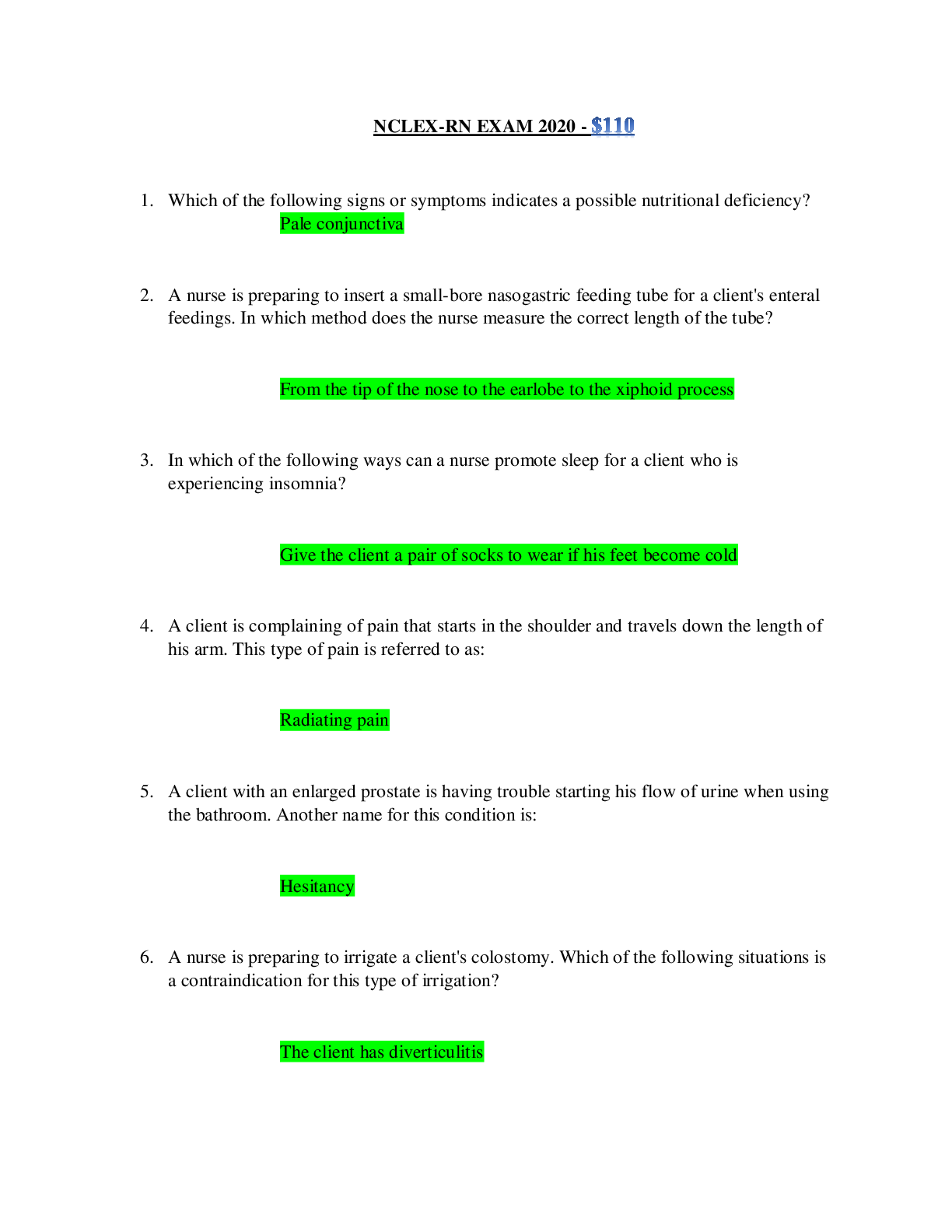NCLEX-RN PRACTICE QUESTIONS AND ANSWERS 2022 A+
Document Content and Description Below
NCLEX-RN PRACTICE QUESTIONS AND ANSWERS 2022 A+ The healthcare provider is performing an assessment on a patient who is taking propranolol (Inderal) for supraventricular tachycardia. Which assessme... nt finding is an indication the patient is experiencing an adverse effect of this drug? Please choose from one of the following options. a. Dry mouth b. Bradycardia c. Urinary retention d. Paresthesia - ANS-Bradycardia - Propranolol is a nonselective beta-adrenergic antagonist. - Beta-1 receptors are found in the cardiac conduction system and myocytes. - Beta-1 blockade will slow discharge from the SA node and decrease speed through the AV node, slowing the heart rate. A patient experiencing ventricular tachycardia is given a medication which acts on the phase of the myocardial action potential indicated by the red "X." Which class of medication will the healthcare provider administer to the patient? a. Potassium channel blocker b. Adrenergic agonist c. Sodium channel blocker d. Sympathomimetic - ANS-Potassium channel blocker - The medication will decrease the heart rate and prolong the action potential and refractory period. - The dysrhythmia occurs during phase 3 of the action potential. - During phase 3 there is rapid repolarization when potassium leaves the cell, so a potassium channel blocker will be administered. A patient is being discharged after the insertion of a permanent pacemaker. Which statement made by the patient indicates an understanding regarding appropriate self-care? a. "Every morning I will perform arm and shoulder stretches." b. "Each day I'll take my pulse and record it in a log." c. "I'll have to get rid of my microwave oven." d. "I won't be able to use my electric blanket anymore." - ANS-"Each day I'll take my pulse and record it in a log." - Initially, patients should limit arm and shoulder activity on the operative side to prevent dislodgment of the pacing leads. - Microwave ovens and electric blankets will not adversely affect the pacemaker. - Tracking one's pulse can help the patient know if the pacemaker is working properly. A patient who has experienced atrial fibrillation for the past 3 days is admitted to the cardiac care unit. In addition to administering an antidysrhythmia medication, the healthcare provider should anticipate which of these orders? a. Initiate a heparin infusion b. Give atropine IV push c. Prepare for immediate cardioversion d. Prepare the patient for AV node ablation - ANS-Initiate a heparin infusion - The antidysrhythmic will help control rhythm and rate, so atropine (an anticholinergic) is not indicated. - Cardioversion or ablation is usually reserved for patients who have not responded to antidysrhythmic medications. - Because blood tends to pool and clot in the fibrillating atria, patients with atrial fibrillation are at high risk for embolic stroke, so heparin will be given. The healthcare provider is caring for a patient with a diagnosis of hypomagnesemia and a QT interval of 0.500 seconds. Which of these, if noted on the cardiac monitor, is an indication the patient's condition is worsening? a. Premature ventricular contractions b. Narrow QRS complexes c. An R-R interval of 111 second d. A polymorphic ventricular tachycardia - ANS-A polymorphic ventricular tachycardia - An R-R interval of 111 second translates to a heart rate of 60 beats per minute, which is a normal finding. - Narrow QRS complexes are associated with a variety of tachycardias, but is not expected in this situation. - The patient's history of hypomagnesemia and prolonged QT interval puts the patient at risk of developing torsades de pointes, a polymorphic ventricular tachycardia that can potentially degenerate into a ventricular fibrillation. A patient with a diagnosis of Wolff-Parkinson-White syndrome is undergoing a catheter ablation procedure. When caring for the patient after the procedure, which is the priority intervention? a. Assist the patient to the bathroom to void. b. Auscultate apical pulse for a full minute every hour. c. Monitor insertion site and distal pulses. d. Assess level of consciousness. - ANS-Monitor insertion site and distal pulses. - The extremity where the catheter was inserted will be immobilized initially, so the patient will not be allowed out of bed to use the bathroom. - The patient will be on a cardiac monitor so auscultation of the apical pulse for one minute is not a priority. - Because the catheter may cause trauma to the vessels, the healthcare provider will monitor for hematoma formation and interference of circulation distal to the insertion site. The healthcare provider is teaching a student about the cardiac cycle and how it relates to the electrocardiogram (EKG). What will the healthcare provider tell the student about the cardiac events that occur during the waveform contained in the shaded area of the EKG? a. "This represents early repolarization of right and left ventricles." b. "The repolarization of the His Purkinje system happens here." c. "Ventricular depolarization and atrial repolarization occur during this time." d. "Atrial depolarization and AV node stimulation are occurring at this time." - ANS- "Ventricular depolarization and atrial repolarization occur during this time." - The arrow is pointing to a waveform called the QRS complex. - Atrial depolarization is represented by the P wave. - Ventricular depolarization follows atrial depolarization. Atrial repolarization occurs simultaneously and is masked by the QRS complex. The healthcare provider is examining the electrocardiogram (EKG) of a patient and notes the PR interval is 6 small boxes in length. What is the significance of this finding? Please choose from one of the following options. a. Stress is causing increased sympathetic stimulation. b. This should be documented as an expected finding. c. There may be some scar tissue in one of the ventricles. d. There may be a delay in the conduction through the AV node. - ANS-There may be a delay in the conduction through the AV node. - The PR interval reflects the time it takes for the atria to depolarize and for the action potential to travel through the AV node and to His-Purkinje system. - Each small box on the EKG graph paper equals 0.040 seconds. - The normal PR interval is 0.120 - 0.200 seconds, which is 3 to 5 small boxes. When caring for a patient with a cardiac dysrhythmia, which laboratory value is a priority for the healthcare provider to monitor? a. BUN and creatinine b. Sodium, potassium, and calcium c. Hemoglobin and hematocrit d. PT and INR - ANS-Sodium, potassium, and calcium - BUN and creatinine levels are always important to monitor when giving any drug, not only antidysrhythmia drugs. - The PT and INR will be important for patients who are on warfarin (Coumadin). - Because abnormalities in sodium, potassium and calcium levels are likely to affect depolarization and repolarization of cardiac cells, it is most important for the healthcare provider to monitor these laboratory values. Risks and benefits are balanced when giving an antidysrhythmic drug to a treat a cardiac dysrhythmia. When does the need for the drug outweigh the risks? a. When there is impairment in cardiac output. b. When the dysrhythmia becomes chronic. c. If the heart rate is 50 to 60 beats per minute. d. After the heart rate reaches a rate faster than 100 beats per minute - ANS-When there is impairment in cardiac output. - A heart rate less than 60 beats per minute is usually well tolerated in an otherwise healthy adult. - Because antidysrhythmic medications can cause new dysrhythmias or worsen existing dysrhythmias, chronicity of a dysrhythmia is not the only consideration when weighing risks and benefits. - If ventricular pumping is impaired so that cardiac output is decreased, the benefits of an antidysrhythmic mediation often outweigh the risks. While caring for a patient who is experiencing a postoperative hemorrhage, the healthcare provider notes the rhythm observed on the electrocardiogram (EKG) does not produce a pulse. Which initial action(s) is/are most likely to resolve this patient's problem?... [Show More]
Last updated: 1 year ago
Preview 1 out of 6 pages
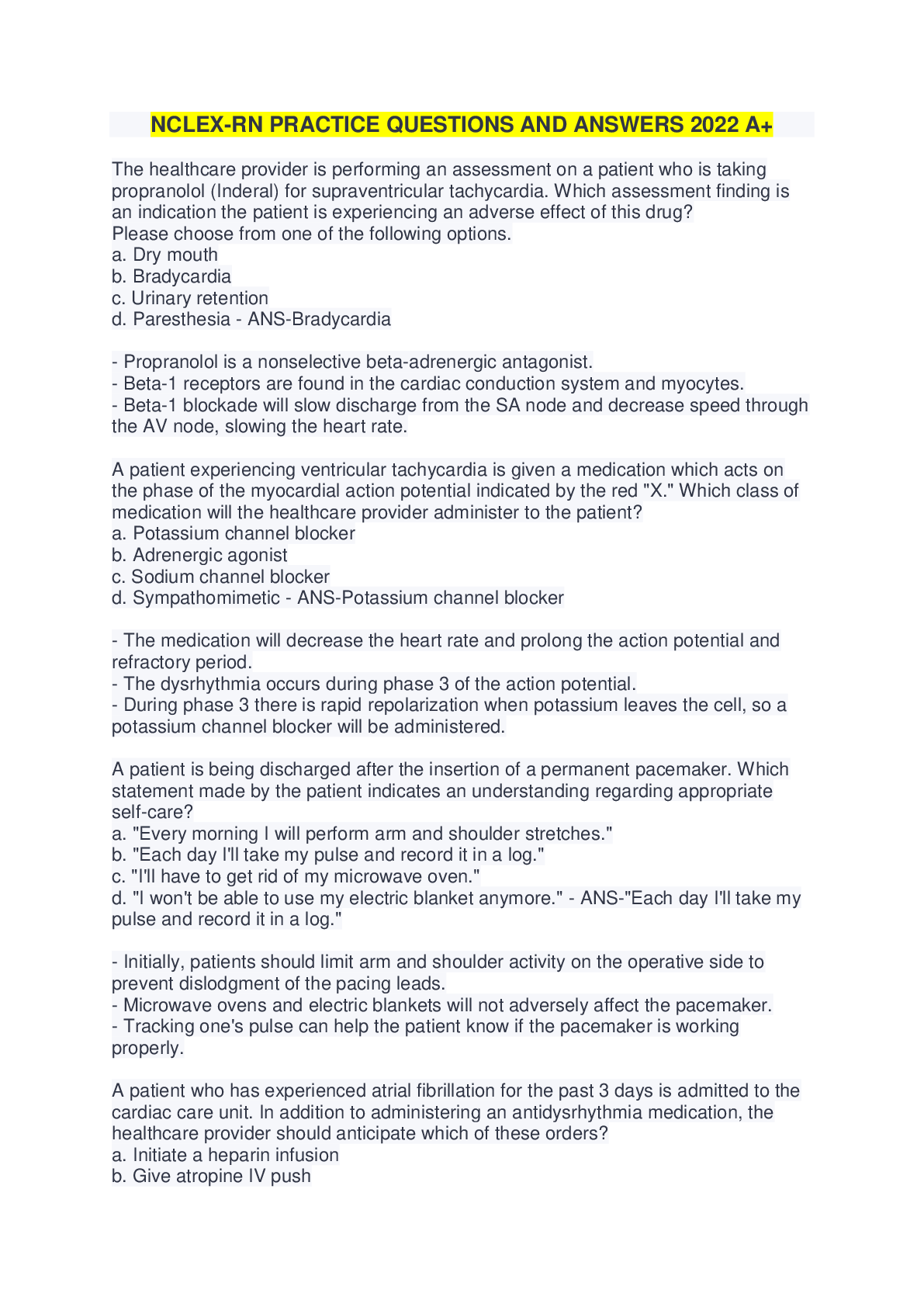
Reviews( 0 )
Document information
Connected school, study & course
About the document
Uploaded On
Oct 07, 2022
Number of pages
6
Written in
Additional information
This document has been written for:
Uploaded
Oct 07, 2022
Downloads
0
Views
40

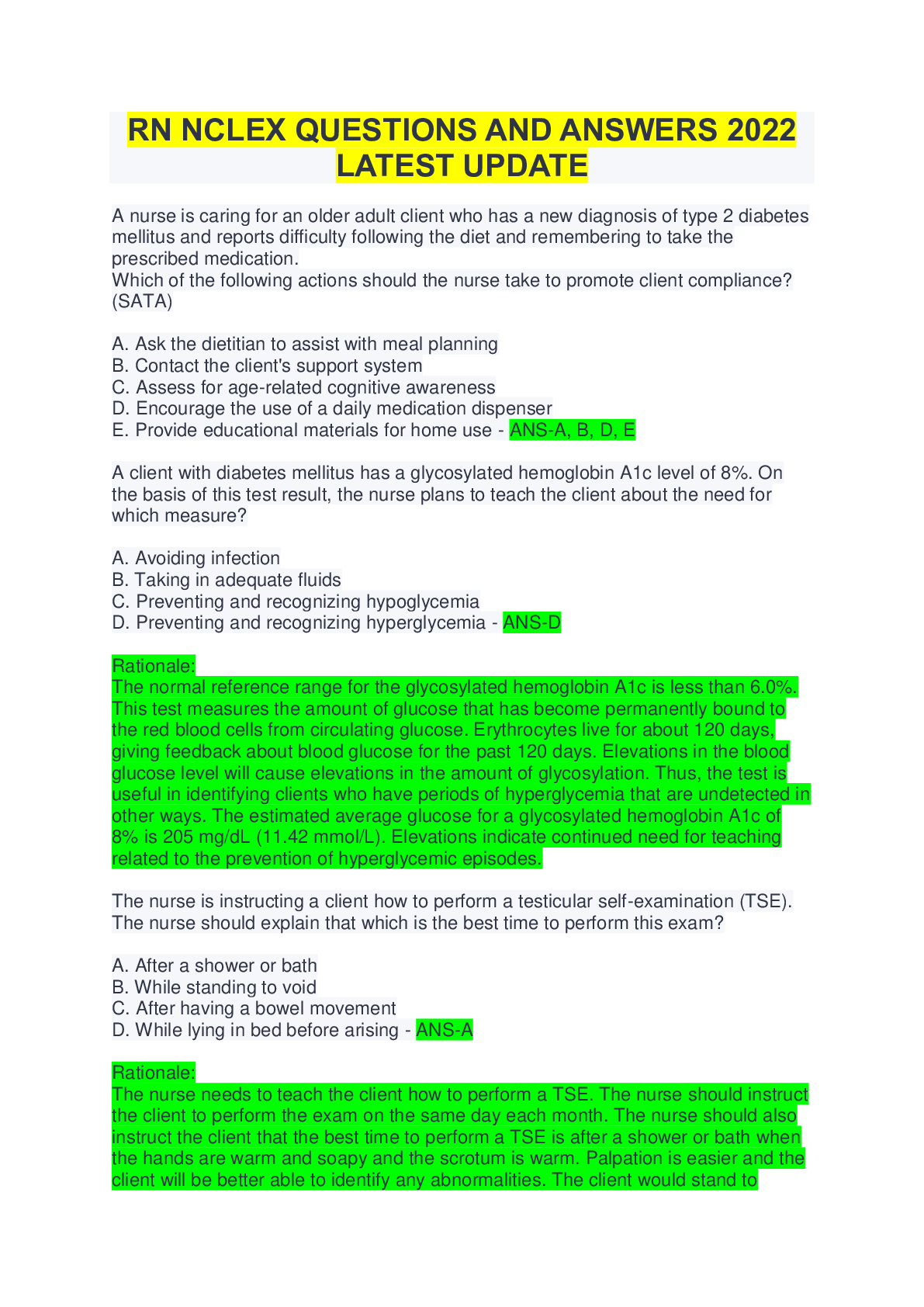
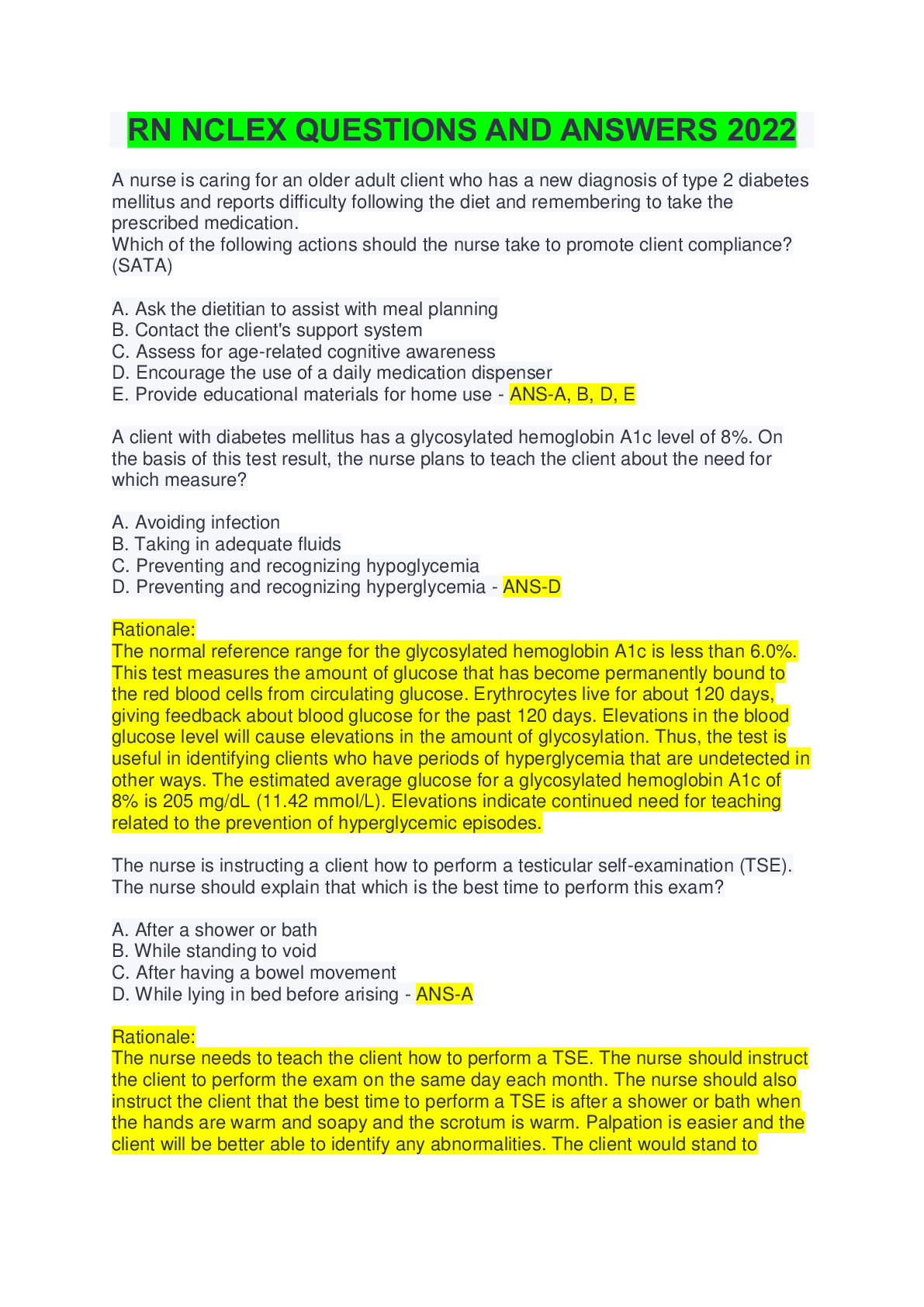
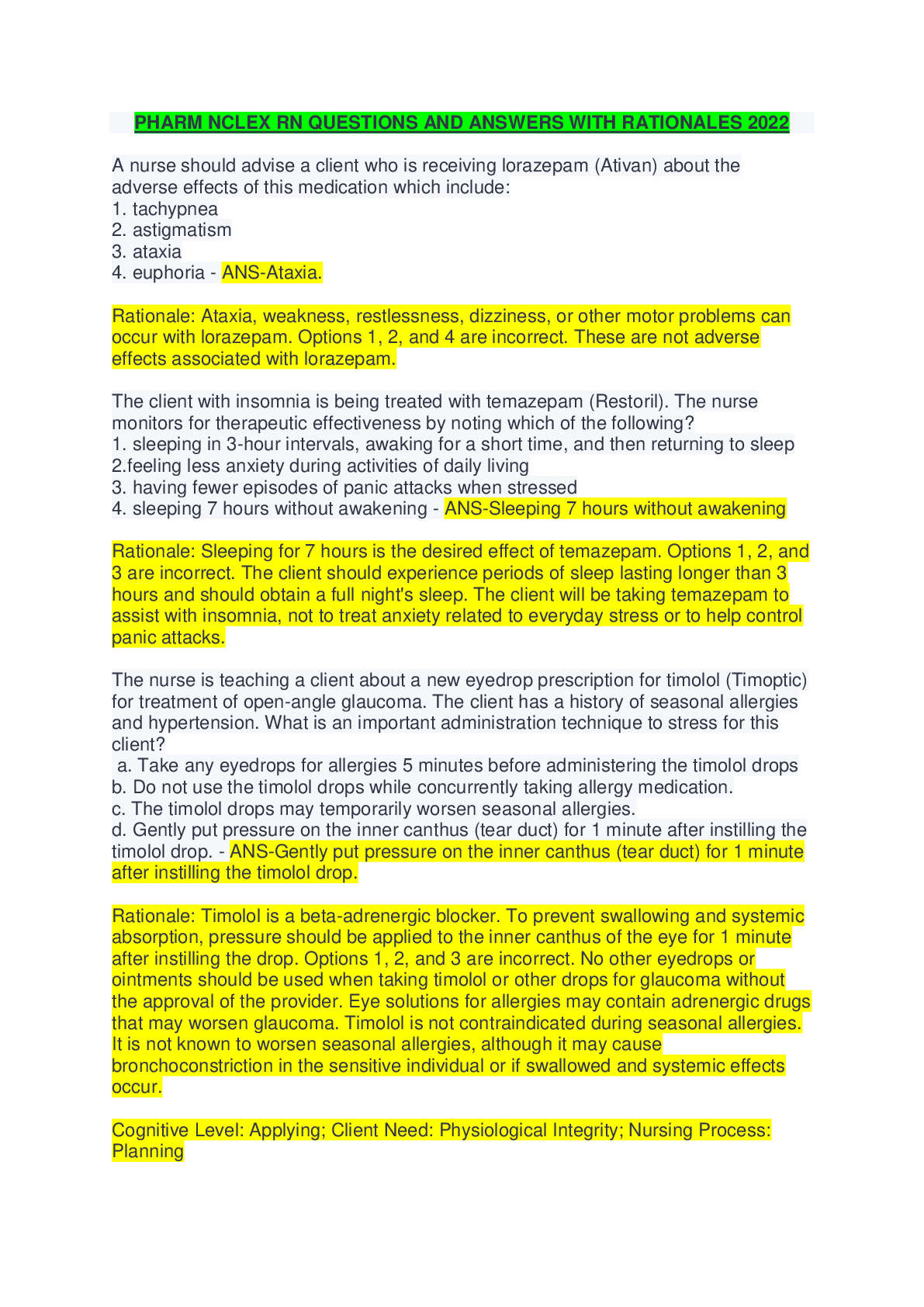

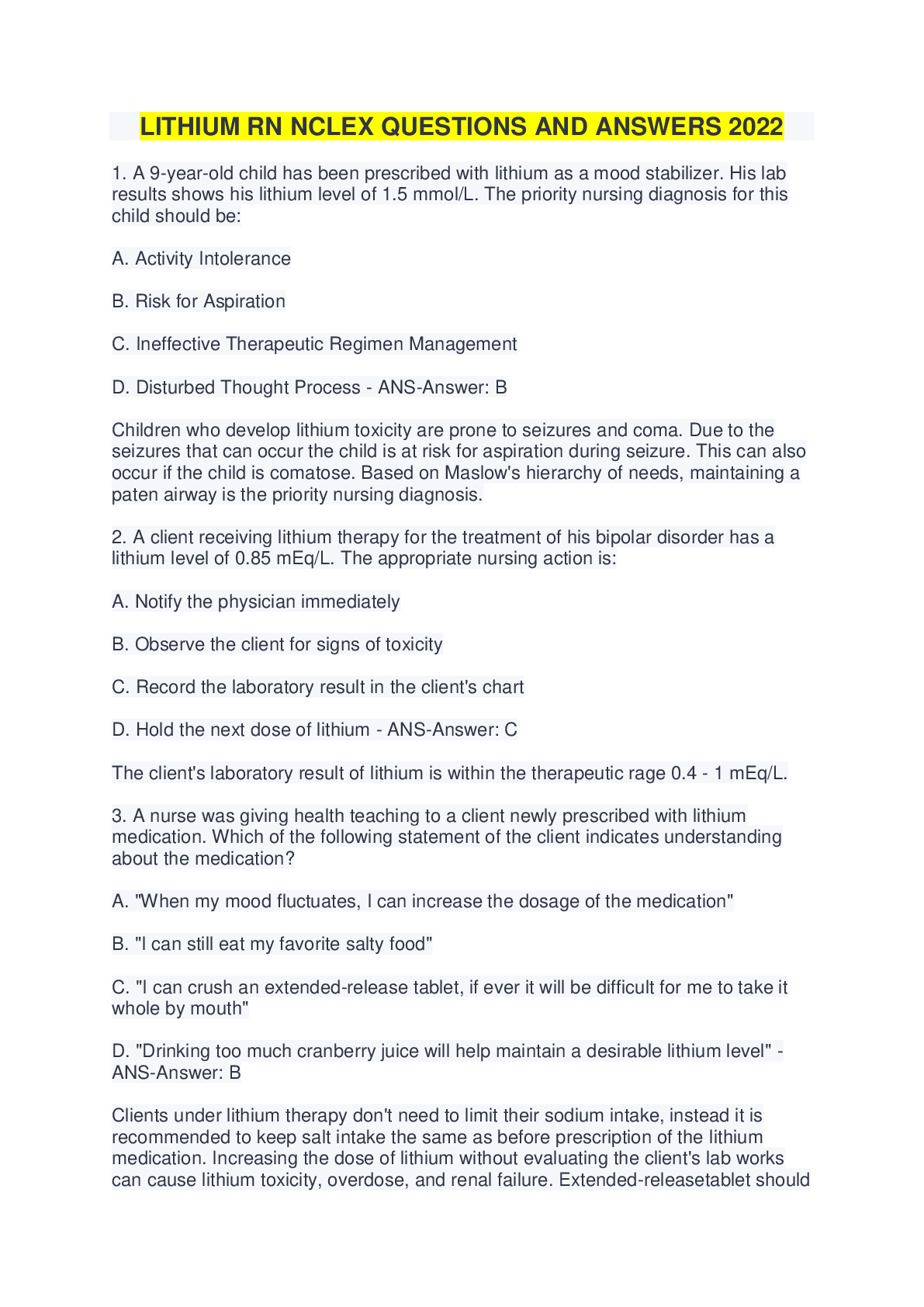

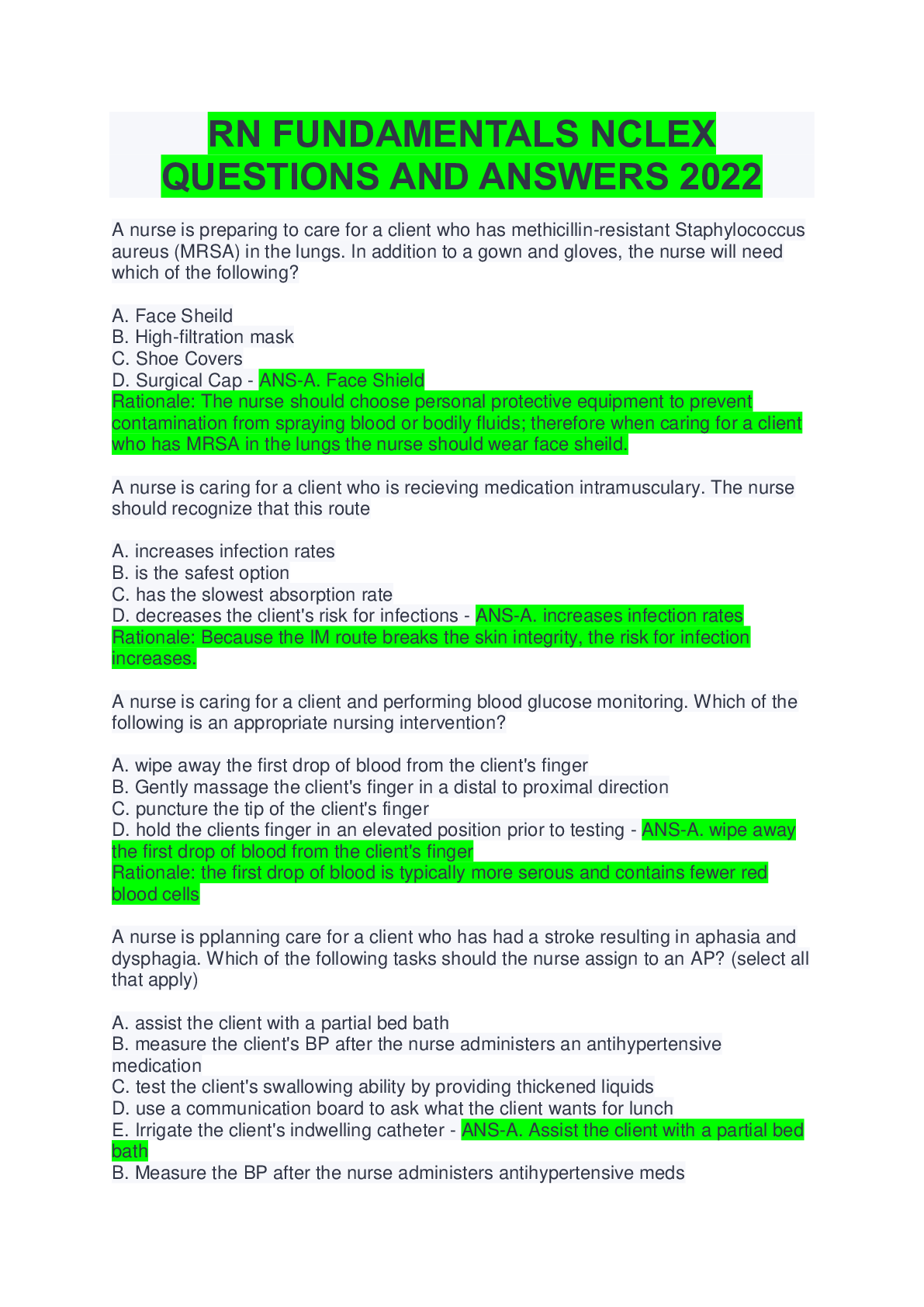
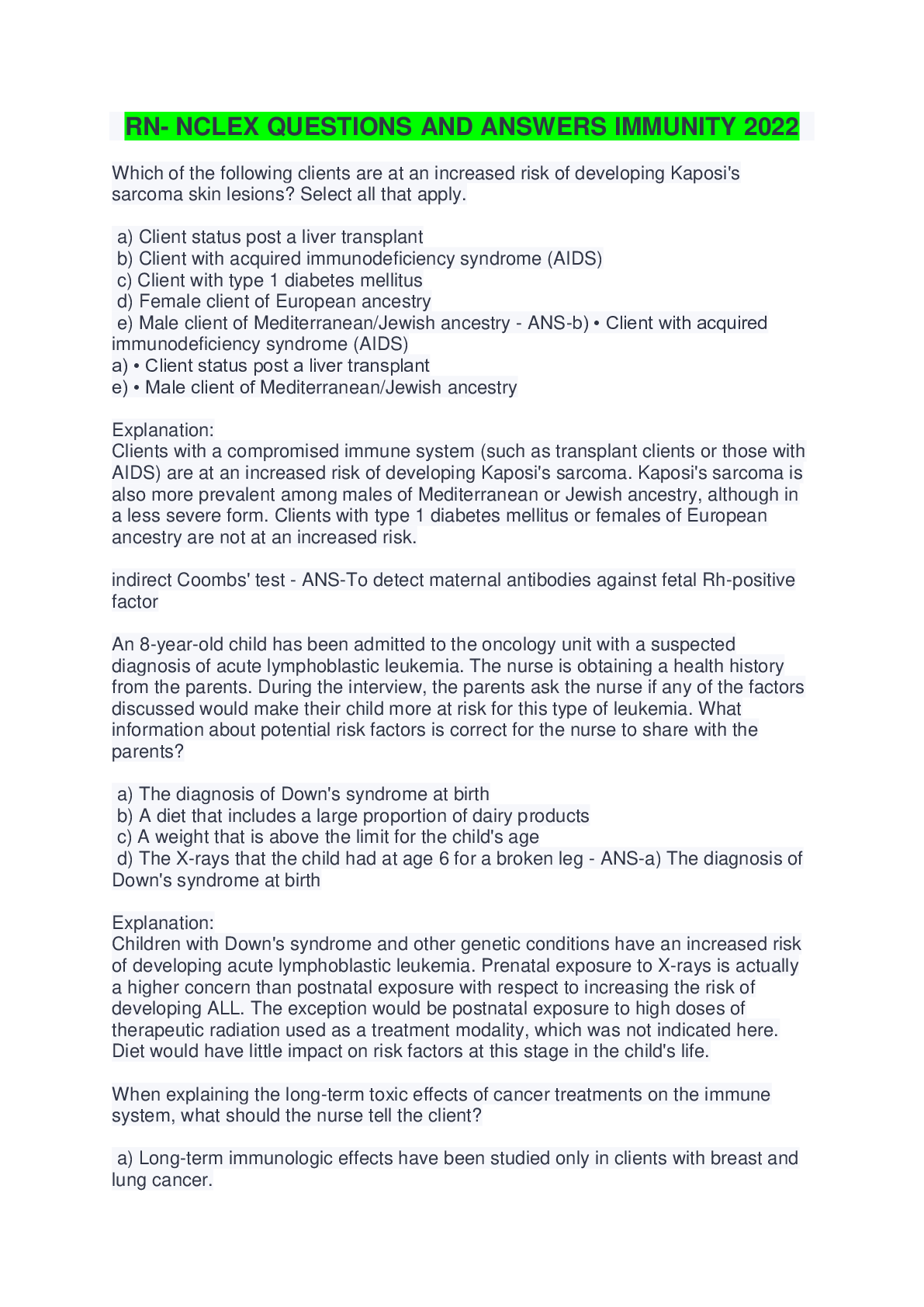
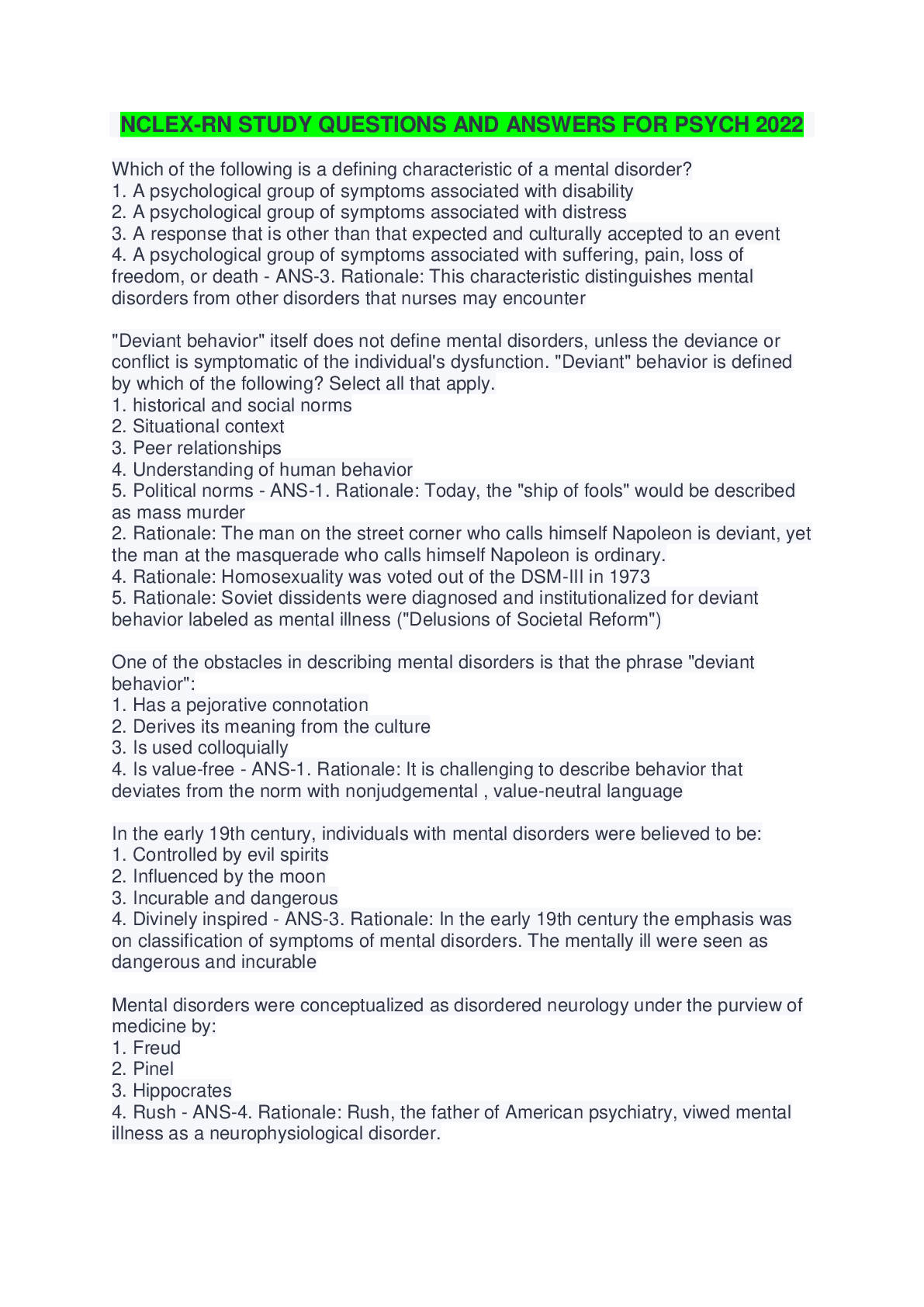
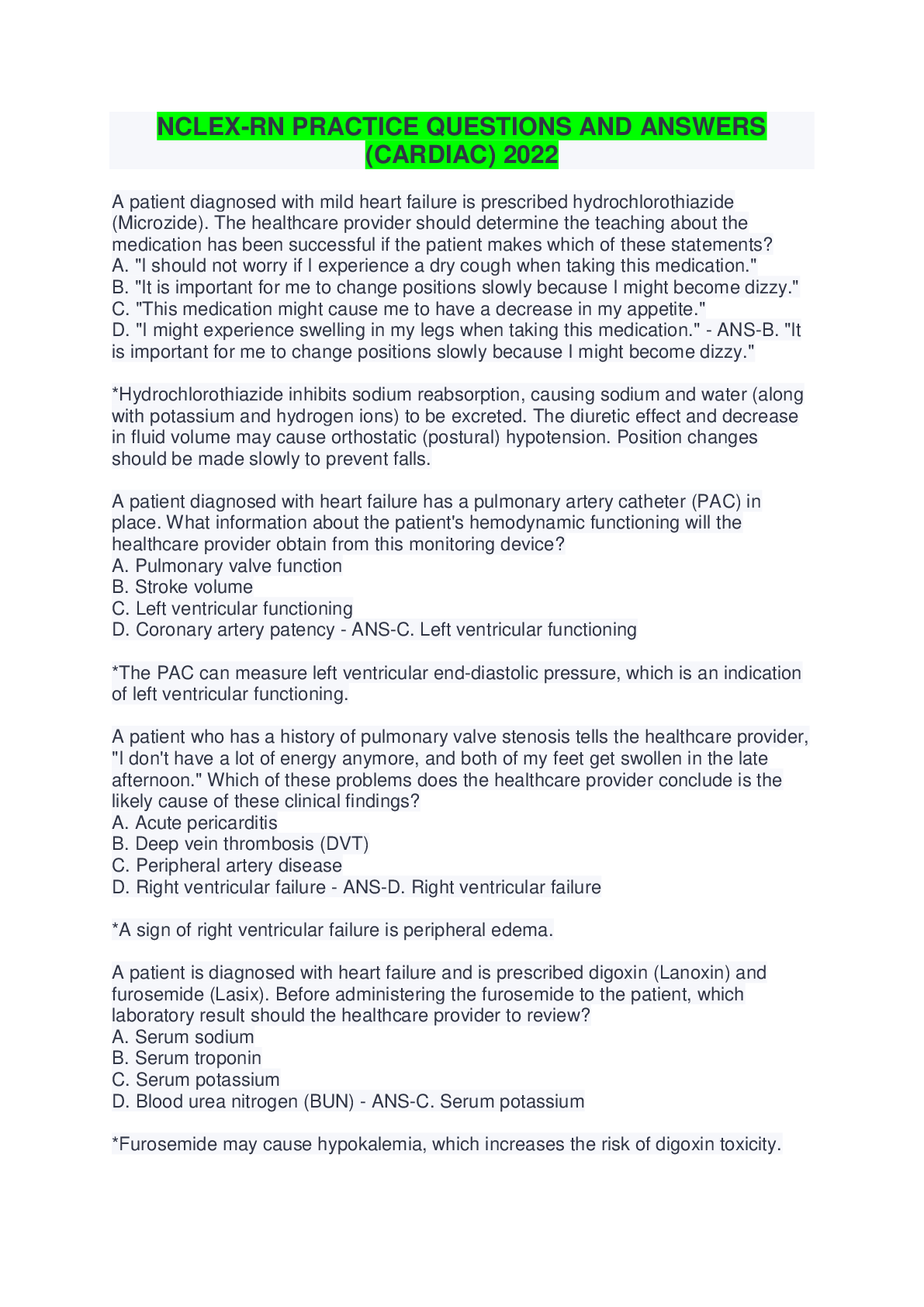

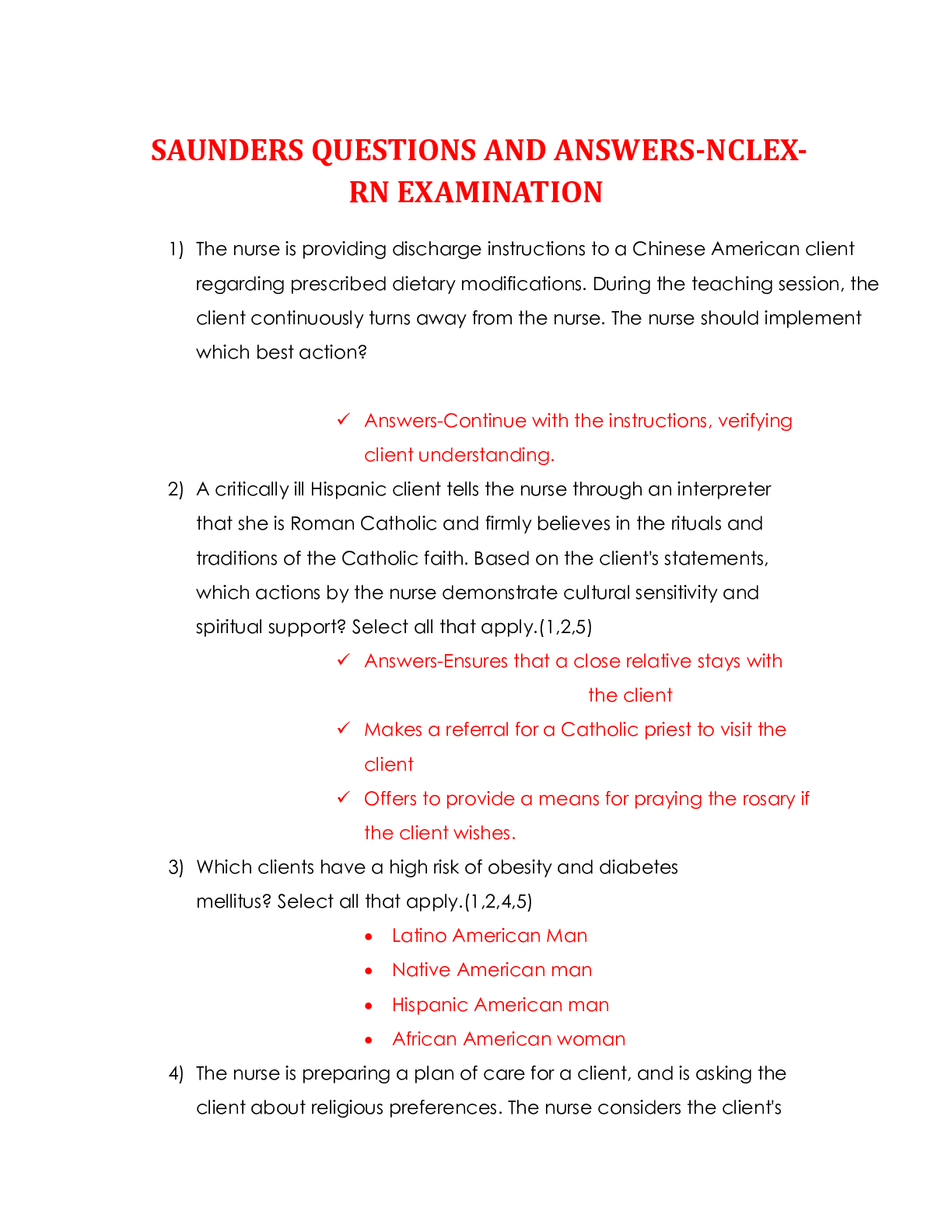
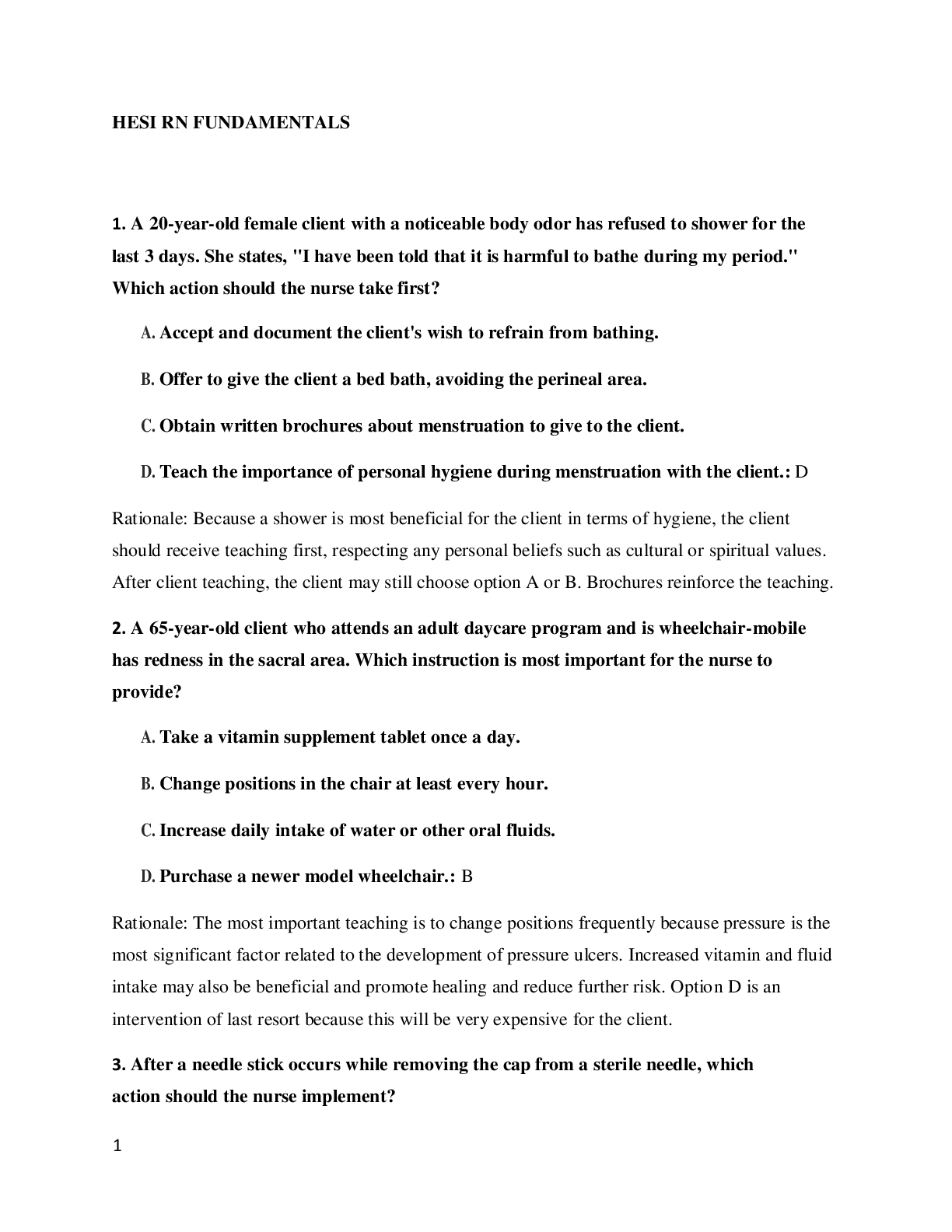
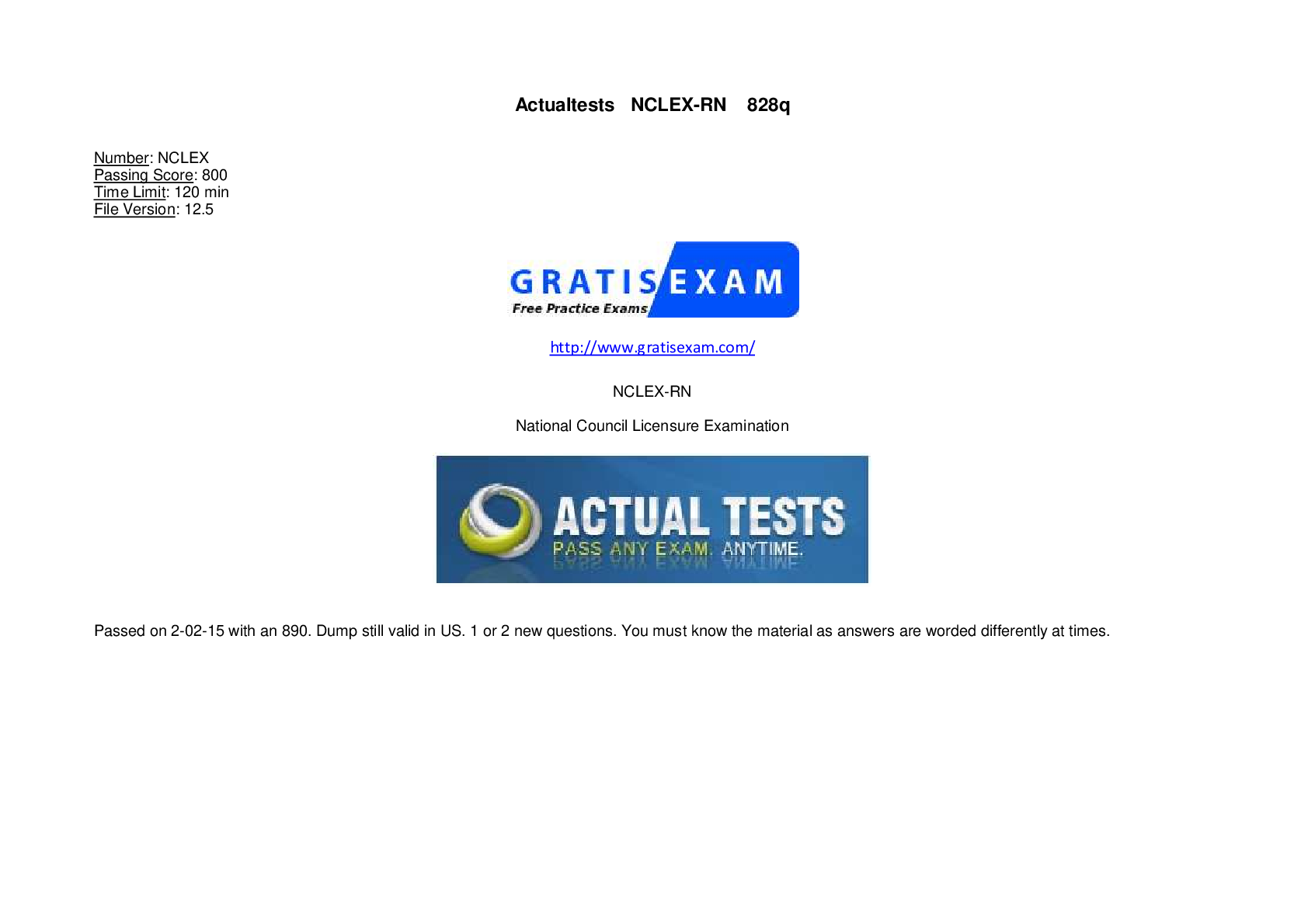



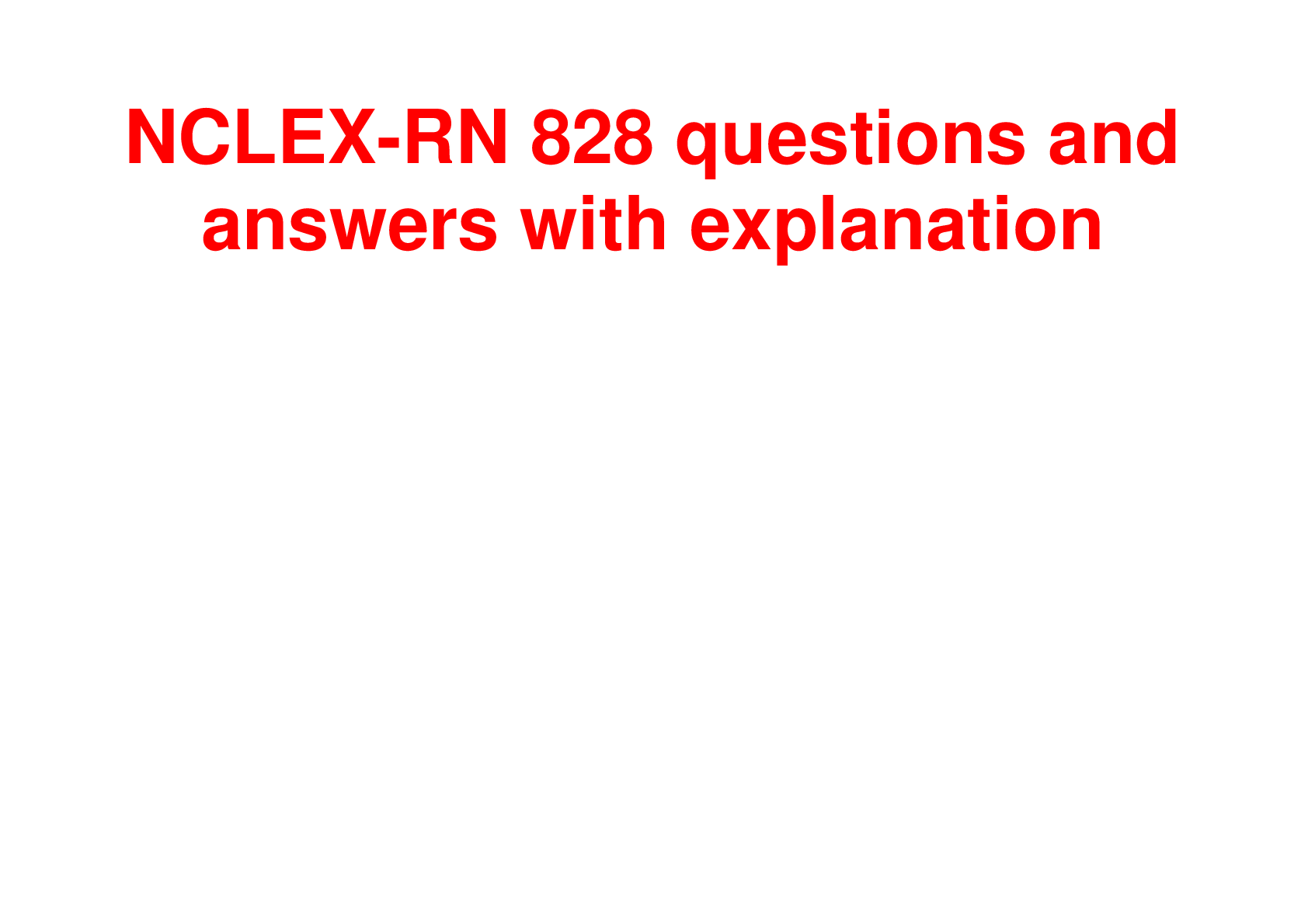
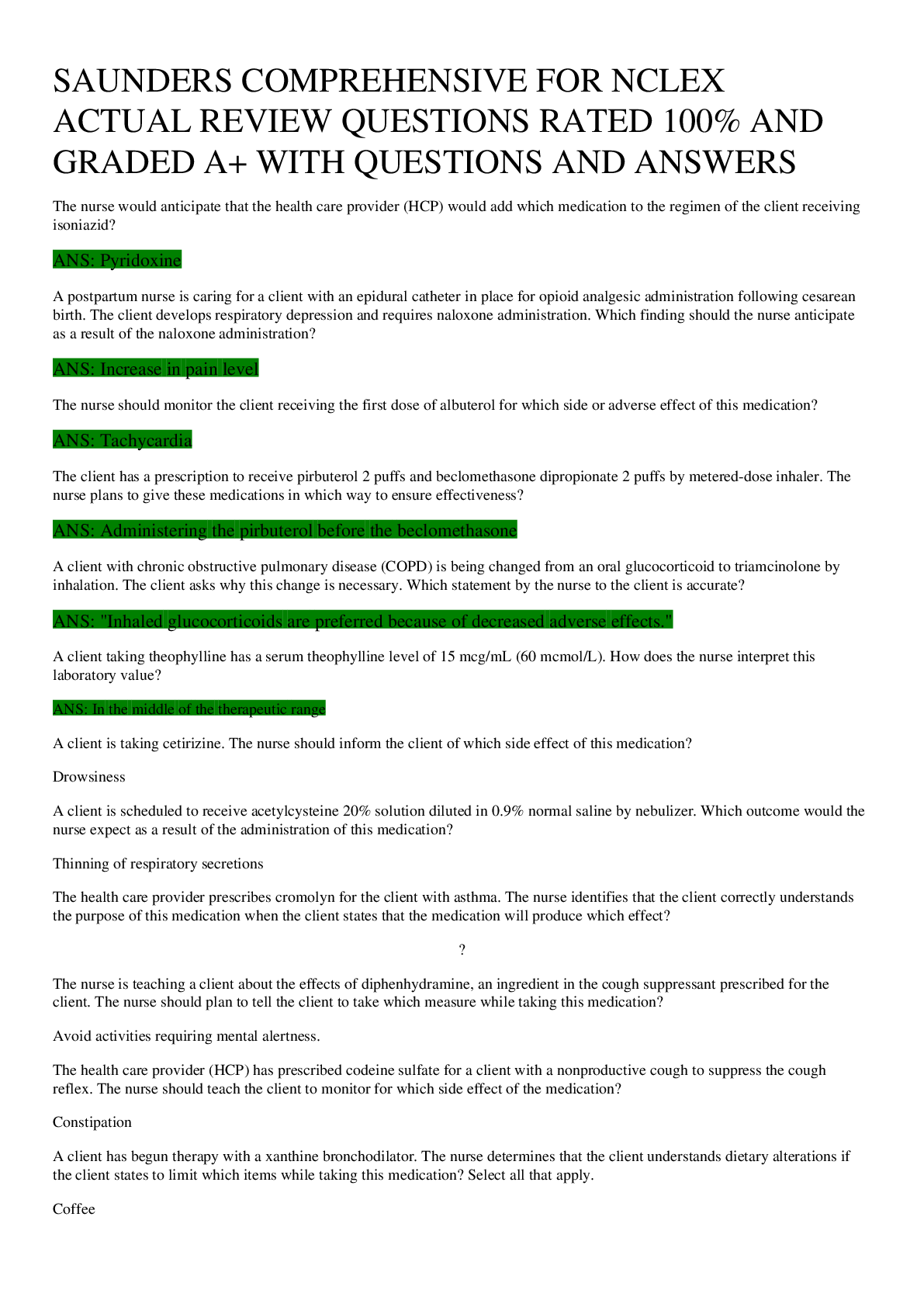
 With 850 Questions And Answers Guaranteed 100% Grade A.png)
